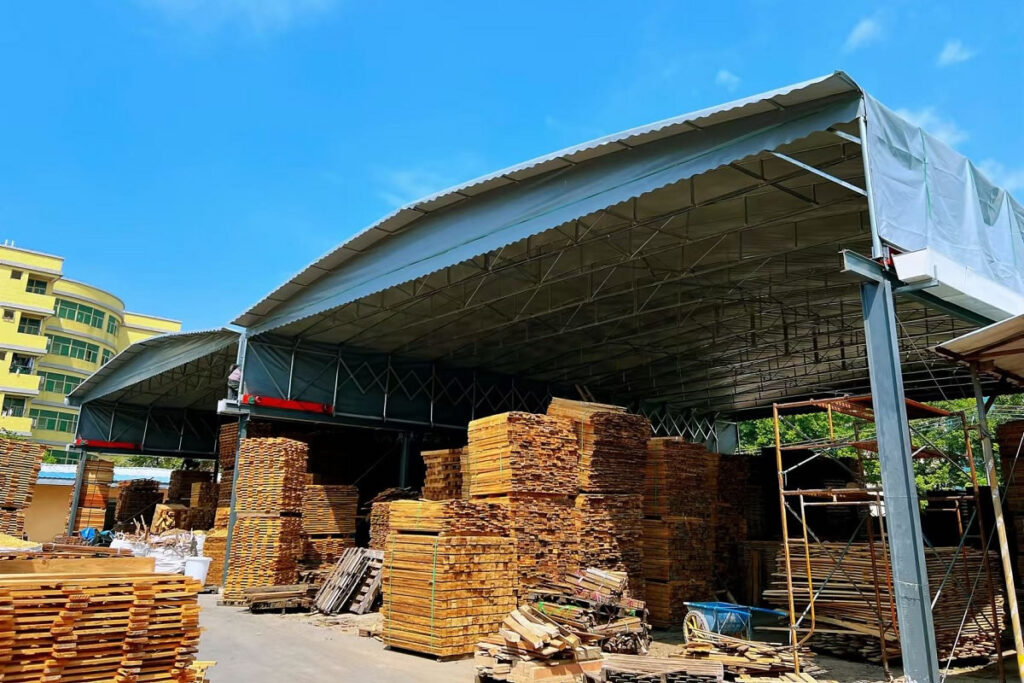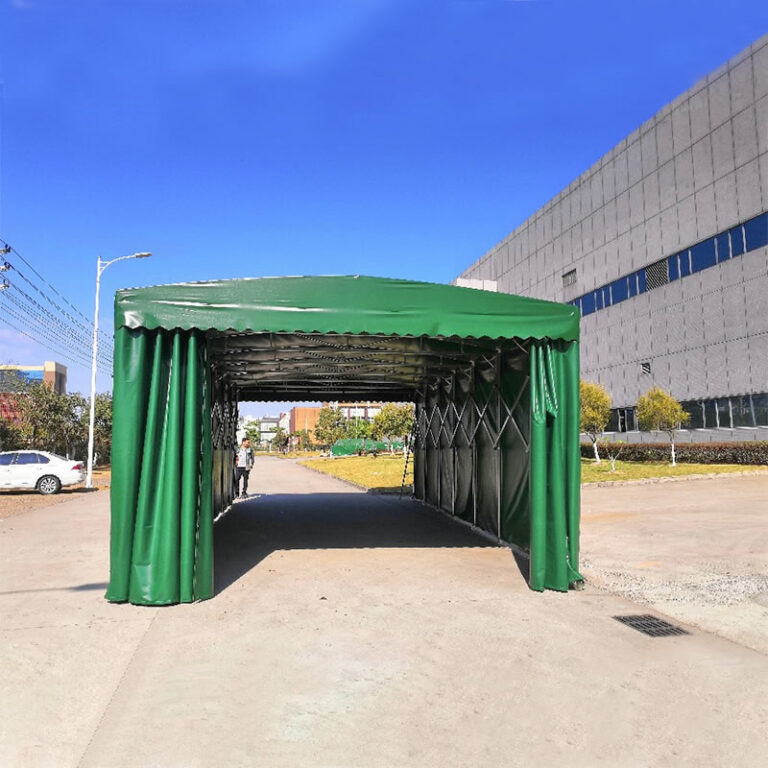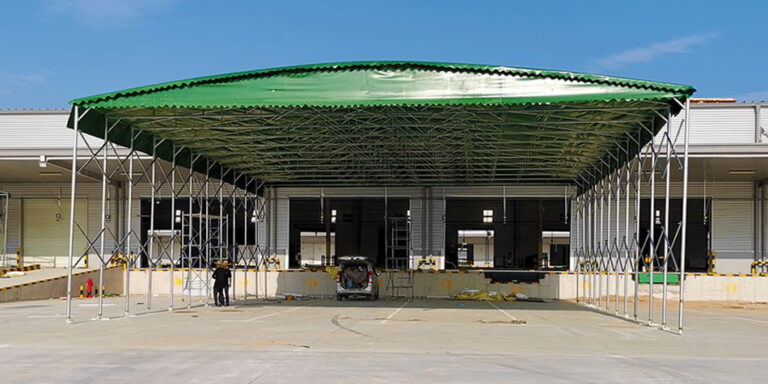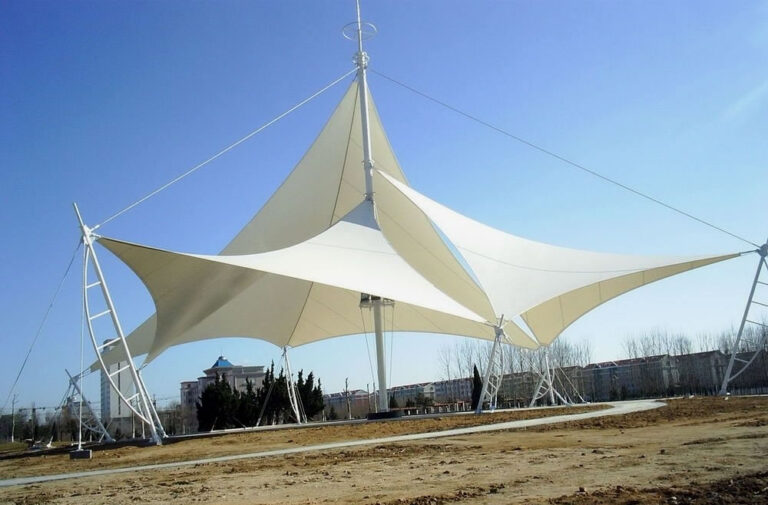Maximize Space with Storage and Warehouse Tents
As businesses, industries, and individuals increasingly look for efficient ways to manage space, storage and warehouse tents have emerged as a popular solution. These versatile, cost-effective alternatives to traditional buildings offer quick setup, robust protection, and the flexibility to adapt to changing needs. Whether for inventory management, industrial storage, or even seasonal overflow, storage tents can make a significant difference in how space is utilized.

What Are Storage and Warehouse Tents?
Storage and warehouse tents are temporary structures designed to provide secure and weather-resistant storage solutions. These tents are used in a wide variety of industries, ranging from construction to agriculture, and even retail. They can be used to store equipment, goods, and raw materials, offering the same protective benefits as a permanent structure, but at a fraction of the cost and with far more flexibility.
Unlike traditional buildings, storage tents are designed to be easily assembled and disassembled, making them perfect for short-term or seasonal needs. While the terms “storage tents” and “warehouse tents” are often used interchangeably, warehouse tents generally have larger capacities and are designed for more industrial applications, whereas storage tents are more suited for smaller-scale storage.
Benefits of Using Storage and Warehouse Tents
The use of storage and warehouse tents offers numerous benefits, making them an attractive alternative to traditional storage solutions.
Cost-Effectiveness and Budget Flexibility
Storage tents are a fraction of the cost of constructing a traditional building, offering businesses the flexibility to allocate their resources elsewhere. This cost-effectiveness extends to maintenance as well, as storage tents are easier to repair and maintain than permanent structures.
Quick Setup and Installation
The most compelling reason to choose a storage or warehouse tent is the speed with which it can be set up. With minimal tools and labor, tents can be erected in a matter of hours, allowing businesses to quickly expand their storage capacity as needed.
Mobility and Flexibility for Changing Needs
Unlike permanent buildings, storage tents can be relocated with ease. This flexibility is particularly valuable for businesses that need to adjust to seasonal fluctuations in storage requirements or for companies operating in temporary locations.
Protection from the Elements
One of the primary functions of a storage tent is its ability to protect stored items from the elements. These tents are designed with weather-resistant fabrics and materials that safeguard goods from rain, wind, and UV exposure.
Types of Storage and Warehouse Tents
Choosing the right type of tent for your specific needs is essential to maximizing the available space and ensuring optimal protection.
Frame Tents: Versatility and Strength
Frame tents are ideal for medium-to-large-scale storage applications. They feature a metal frame structure that supports the tent fabric, allowing for a wide open space without the need for center poles. This makes them perfect for storage operations that require unhindered access to the interior.
Clear Span Tents: Maximizing Open Space
Clear span tents offer expansive, column-free interiors that maximize storage space. With no internal support poles, clear span tents provide an unobstructed layout, making them a popular choice for warehouse applications.
Pole Tents: Affordable and Reliable Options
Pole tents are an affordable and reliable option for many businesses. These tents feature center poles that provide support for the fabric, but their design limits the available space in the center of the tent. Nonetheless, pole tents are a cost-effective solution for those who need temporary storage space.
Choosing the Right Material for Your Tent
The material used in your storage tent plays a pivotal role in its durability, functionality, and weather resistance. A range of materials are available, depending on the intended use and environmental conditions.
Durable Fabrics for Harsh Environments
When choosing a tent for industrial or long-term use, opt for durable, heavy-duty fabrics like PVC or polyethylene. These materials are designed to withstand extreme weather conditions, including high winds, heavy rain, and even snow.
UV-Resistant and Weatherproof Options
UV-resistant fabrics are essential for ensuring that stored goods are protected from the sun’s harmful rays. Tents made from UV-resistant materials maintain their integrity over time, preventing fabric degradation.
Reinforced Structures for Added Strength
For larger, commercial storage tents, reinforced structures and triple-layered fabrics are key to ensuring longevity. Stronger materials and heavier-duty poles increase the tent’s resistance to wear and tear, making them suitable for heavy-duty use.
How to Calculate the Right Size for Your Tent
Selecting the correct tent size involves considering a variety of factors to ensure it meets your storage needs while providing adequate space for your goods.
Estimating Storage Needs and Tent Capacity
Start by evaluating your current storage requirements. Consider the size and quantity of the items you plan to store, including any equipment, materials, or inventory. Once you have an estimate of the volume, it’s easier to determine the appropriate tent size.
Factors to Consider: Width, Length, and Height
The dimensions of the tent depend on several factors, including the type of goods being stored and the amount of space needed for access. Tent height is important if you’re storing taller items or need enough space for shelving and racking systems.
Planning for Future Growth and Expansion
It’s wise to choose a tent that can accommodate future growth. Opt for a tent that provides more space than you currently need, as this will prevent you from outgrowing your storage solution in the near future.
Setting Up Your Storage and Warehouse Tent
Proper setup ensures that your storage tent is stable and functional. A few essential steps can help streamline the process.
Choosing the Right Location
Select a flat, stable area for tent installation. Ensure that the ground is level to avoid instability or improper drainage.
Preparing the Ground for Installation
Clear the site of debris, rocks, or vegetation. If necessary, lay down a tarp or gravel foundation to enhance drainage.
Tent Assembly: Tools and Tips for Quick Setup
Assemble the tent following the manufacturer’s instructions. Frame and pole tents typically require minimal tools for setup, while larger, more complex structures may need professional assistance.
Maximizing the Interior Space of Your Tent
Once your storage tent is set up, it’s essential to utilize the space efficiently. Here are several strategies for maximizing storage potential.
Effective Organization and Layout Strategies
Use shelving and racking systems to divide the space into manageable sections. Group similar items together to streamline access and improve organization.
Shelving and Racking Systems
Install adjustable racking systems to store materials vertically, thus maximizing floor space. These systems allow you to store more goods in a smaller area.
Efficient Use of Vertical Space
Make use of the tent’s height by stacking goods and installing mezzanine floors for added storage capacity.
Tent Flooring: Adding Stability and Functionality
Flooring adds a level of stability and durability to your storage tent.
Types of Flooring: From Gravel to Modular Systems
Choose flooring based on the types of goods being stored. Gravel, wooden planks, or modular floor systems provide a firm base that enhances the stability of your tent structure.
Flooring for Different Types of Inventory
Consider the weight and type of materials you’re storing. Heavy-duty flooring may be necessary for industrial equipment or heavy pallets.
Ensuring Proper Drainage and Leveling
Proper drainage prevents water buildup and reduces the risk of mold and mildew. Ensure that the flooring is level to maintain the integrity of stored goods.
Climate Control in Storage and Warehouse Tents
Temperature control is an important consideration for maintaining the quality of stored goods.
Ventilation Options: Keeping the Airflow Optimal
Ensure that the tent is properly ventilated to maintain airflow. This can prevent humidity and condensation, both of which can damage goods.
Adding Heaters and Coolers for Temperature Control
If storing temperature-sensitive materials, consider installing heaters or coolers inside the tent. This ensures a controlled environment year-round.
Insulating Your Tent for Year-Round Use
For year-round use, tent insulation is a must. It regulates the interior temperature, ensuring that your storage space remains functional no matter the season.
Security Considerations for Storage Tents
Protecting your inventory and ensuring that only authorized personnel have access to the storage tent is essential for safeguarding your assets.
Securing Inventory with Locks and Barriers
Use strong locks, security gates, and barriers to keep unauthorized individuals out. This can protect valuable or sensitive items stored inside the tent.
Surveillance and Monitoring Systems
Install cameras or motion detectors for enhanced security. These devices can help prevent theft and ensure that your storage area is monitored 24/7.
Managing Access Points and Entries
Limit the number of access points to the tent and ensure that only authorized personnel can enter. This reduces the chances of unauthorized access or damage to goods.
Maintenance and Longevity of Storage Tents
Regular maintenance ensures the longevity of your storage tent.
Regular Inspections for Wear and Tear
Inspect the tent regularly for signs of wear, such as rips, tears, or damage to the fabric. Early detection of issues prevents costly repairs later on.
Cleaning and Care of Tent Fabric
Clean the tent fabric to remove dirt, debris, and stains. This will help maintain its strength and weatherproof qualities.
Storage Tips for Off-Season Protection
When not in use, store the tent properly to prevent damage. Clean the fabric and pack it away in a dry, safe location.
When to Rent vs. Buy a Storage or Warehouse Tent
When deciding between renting and buying a tent, it’s important to consider the duration and frequency of your storage needs.
Advantages of Renting a Tent for Short-Term Needs
Renting a tent is ideal for temporary storage needs, such as seasonal peaks or one-time events.
The Case for Buying a Tent for Long-Term Use
If you require long-term storage solutions, buying a tent provides greater flexibility and long-term cost savings.
Factors to Consider When Making Your Decision
Consider your budget, the duration of your storage needs, and your long-term goals when deciding whether to rent or purchase a tent.
Applications of Storage and Warehouse Tents
Storage and warehouse tents have a broad range of uses across different industries.
Industrial and Commercial Use Cases
These tents are commonly used for equipment storage, inventory management, and warehouse expansion.
Temporary Solutions for Seasonal or Overflow Storage
Businesses experiencing seasonal surges in demand can use storage tents as temporary solutions for extra storage space.
Emergency Storage and Disaster Relief Applications
Storage tents are invaluable in emergency situations, providing quick and effective storage solutions for disaster relief efforts.
Storage and warehouse tents offer a versatile, cost-effective solution to businesses in need of flexible, reliable space. Their ability to protect goods from the elements, combined with easy setup and mobility, makes them an ideal option for a variety of industries. Whether for short-term overflow storage or long-term warehouse solutions, investing in the right tent can help businesses maximize space, improve organization, and enhance security.




